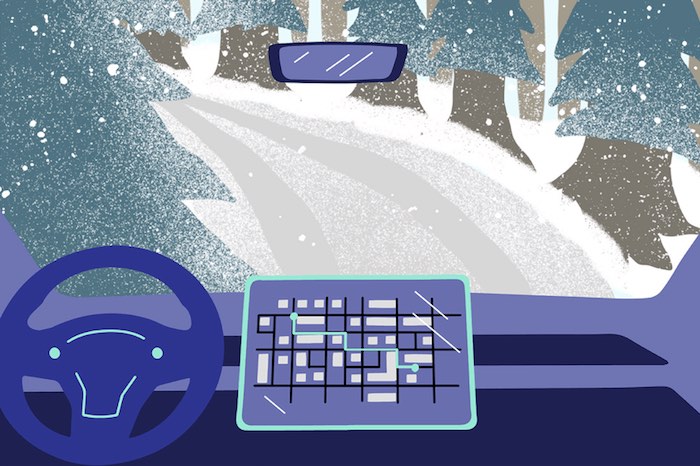All electric cars experience some degree of range loss in cold weather. For EV owners in colder winter climates, like northern portions of the United States, daily driving and charging behaviors must be adjusted in these months.
That’s the bad news. The good news is that this range loss is temporary and there is no long term detriment to your battery. As the ice melts and the temperatures rise, your vehicle’s expected range at full charge should return to normal.
Why Does Cold Weather Affect Electric Vehicle Range?
Winter range loss occurs for a few reasons. We cover them in detail in our hot and cold temperature article but the two main contributing factors are chemical and mechanical.
- Chemical and physical reactions in the battery occur more slowly in cold temperatures. This reduces the EVs power. Cold temperatures inhibit chemical reactions and act as resistance that slows down the physical processes.
- Electric cars have to make their own heat. The internal combustion engines (ICE) that power traditional cars are surprisingly inefficient. All of the energy that ICE cars don’t use to propel them forward is turned into “waste heat,” which is typically just lost energy. In cold weather, however, ICE cars redirect this waste heat from the engine to warm the cabin. On the other hand, an EV has a much more efficient motor which does not generate as much heat. In the cold, available motor heat is routed to warm the battery itself, meaning that cabin heating requires a power source. Cabin heaters generally draw from the high voltage battery, reducing how much battery is left for driving.
Several organizations have studied these effects, including AAA, but they are often completed in laboratory settings or with only several vehicles. This research project includes a much larger data set. Instead of dozens of vehicles, we are analyzing thousands, and recording their performance in real world driving conditions.
At the end of this article, I also share some of the lessons we have learned on combating winter range loss for our fellow EV drivers.
New for 2022: we include data that shows actual, real-world winter range under real-world driving conditions for the Ford Mustang Mach-E, Nissan LEAF, all Tesla models, and Volkswagen ID.4. These verified winter range values reflect average observed data for a variety of drivers under a wide range of use cases.
Electric Cars React to Winter in Very Different Ways
This chart compares 14 popular EV models to show range loss in different driving conditions. It includes aggregated and anonymized data from 7,000 vehicles in the Recurrent community from across the United States as well as tens of thousands of data points from on-board devices that provide data on energy usage.
The estimated winter range for several vehicles has been updated in 2022 to reflect the winter range that we have verified with real-world data. We will continue to update this chart as we verify new models.
Verified winter range figures include all real-world variables, such as uneven terrain, variable driving speeds and uses, and calendar aging in vehicle batteries. They show the average expectation for winter driving conditions in a range of real use cases.

Estimated winter ranges are based on on-board telematics and reflect the OEMs proprietary range calculations and software. Verified winter ranges are based on original Recurrent research using a combination of on-board devices and real-time usage data providing more than 35,000 datapoints.
If you’d like to know more about how each of these vehicles performed click here and scroll to a section highlighting the individual EV Models.

.png?w=740&ssl=1) Jon Witt – BATTERY SCIENCE
Jon Witt – BATTERY SCIENCE















